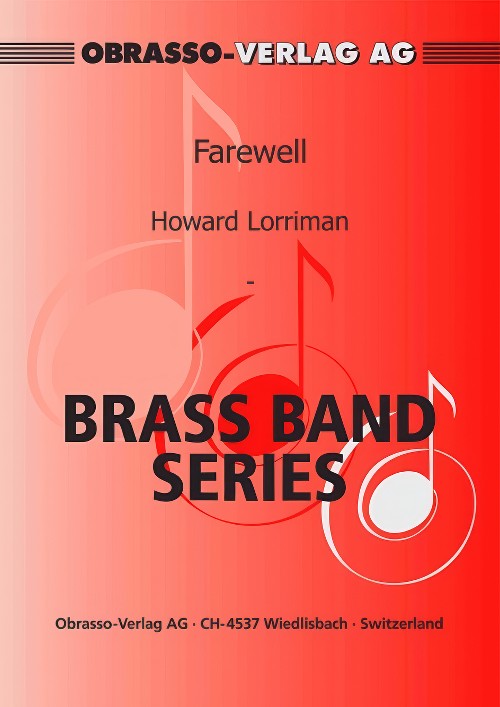Results
-
 £54.20
£54.20Celementine (Brass Band - Score and Parts) - Smith, Sandy
American Traditional
Estimated dispatch 7-14 working days
-
 £54.20
£54.20Farewell (Brass Band - Score and Parts) - Lorriman, Howard
Based on Ashokan Farewell by Jay Ungar
Estimated dispatch 7-14 working days
-
 £54.20
£54.20Latino Fire! (Brass Band - Score and Parts) - Smith, Sandy
Sandy Smith has expertly arranged traditional Latin tunes into this firey number!
Estimated dispatch 7-14 working days
-
 £54.20
£54.20The Golden Age of Dixieland (Brass Band - Score and Parts) - Donaldson, Walter - Smith, Sandy
Medley includes: Yes Sir That's My Baby; My Blue Heaven; Makin' Whoopee; My Baby Just Cares For Me; You're Driving Me Crazy; I Wonder Where My Baby Is Tonight.
Estimated dispatch 7-14 working days
-
 £54.20
£54.20We Love Cha-Cha-Cha (Brass Band - Score and Parts) - Walter, Christoph - Smith, Sandy
Another great original from the pen of Christoph Walter
Estimated dispatch 7-14 working days
-
 £46.20
£46.20Bach On Fire - Brass Band Sheet Music Score & Parts
COMPOSER : J. S. BachARRANGER Sandy Smith
In Stock: Estimated dispatch 3-5 working days
-
 £69.95
£69.95Little Suite No.2 (Arnold) (Brass Band - Score and Parts) - Arnold, Malcolm
Movements include: Round; Cavatina; Galop
Estimated dispatch 7-14 working days
-
 £32.95
£32.95Little Suite No.2 (Arnold) (Brass Band - Score only) - Arnold, Malcolm
Movements include: Round; Cavatina; Galop.
Estimated dispatch 7-14 working days
-
 £49.95
£49.95On the Face Too! (Value Set)
Value Set includes: a score and one of each part:Part A: Trumpet 1 in BbPart B: Trumpet 2 in BbPart C: Horn in EbPart C: Horn in FPart C: Trombone/Euphonium TCPart C: Trombone/Euphonium BCPart D: Trombone TCPart D: Trombone BCPart D: Bass in EbPart D: Tuba BDPercussionAdditional score and parts are also available individually.On the Face Too! is to the secondary school brass teacher as On the Face! is to the primary: namely a collection of pieces for intermediate brass ensemble in various jazz and popular styles, aiming to give a ready supply of material for concerts and assemblies, which nevertheless still allows for the developing technique of the young players to whom it is addressed.Generally speaking, the technical difficulty of the material here goes no further than grade 4 or 5 (even the first trumpet part never goes higher than a written G), though some pieces will offer considerable rhythmic challenges.
Estimated dispatch 7-14 working days
-
 £30.00
£30.00Twelve Scripture-based Songs Volume XIX
Twelve scripture-Based Songs arranged for Brass Band (Volume XIX) are packaged and marketed in complete sets which include a full score and a set of master parts. It is intended that these parts be used as 'masters', for the purpose of photocopying a quantity of parts to accommodate the precise instrumentation needs of the band for which this has been purchased.1. Amazing Grace!2. By Faith3. Faith4. Halle, halle, hallelujah5. I love you6. I will dance, I will sing7. O valiant hearts8. Onward, Christian soldiers9. Shine10. Sing Hosanna!11. Speak, O Lord12. Trust in the Lord
Estimated dispatch 7-14 working days

